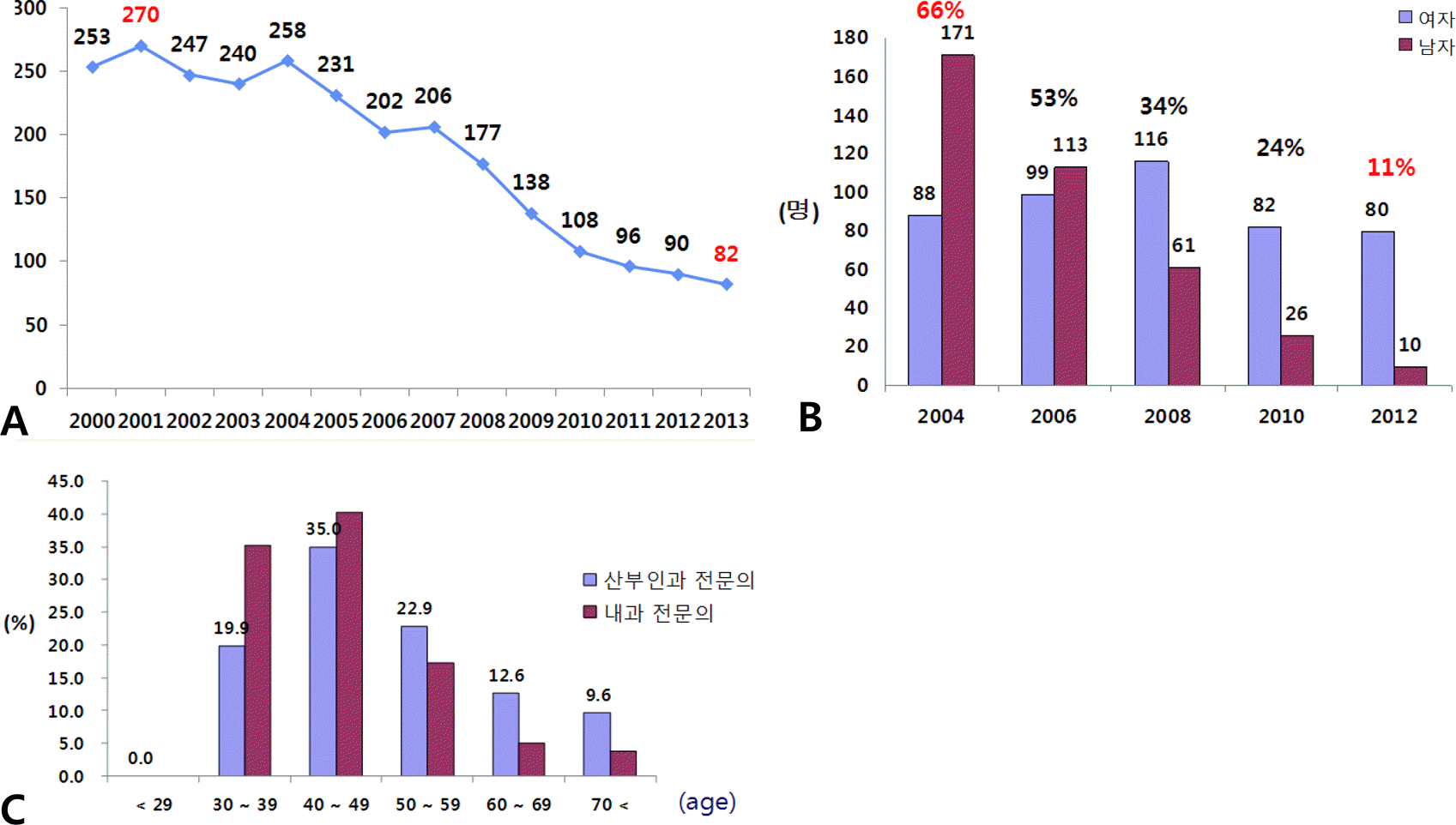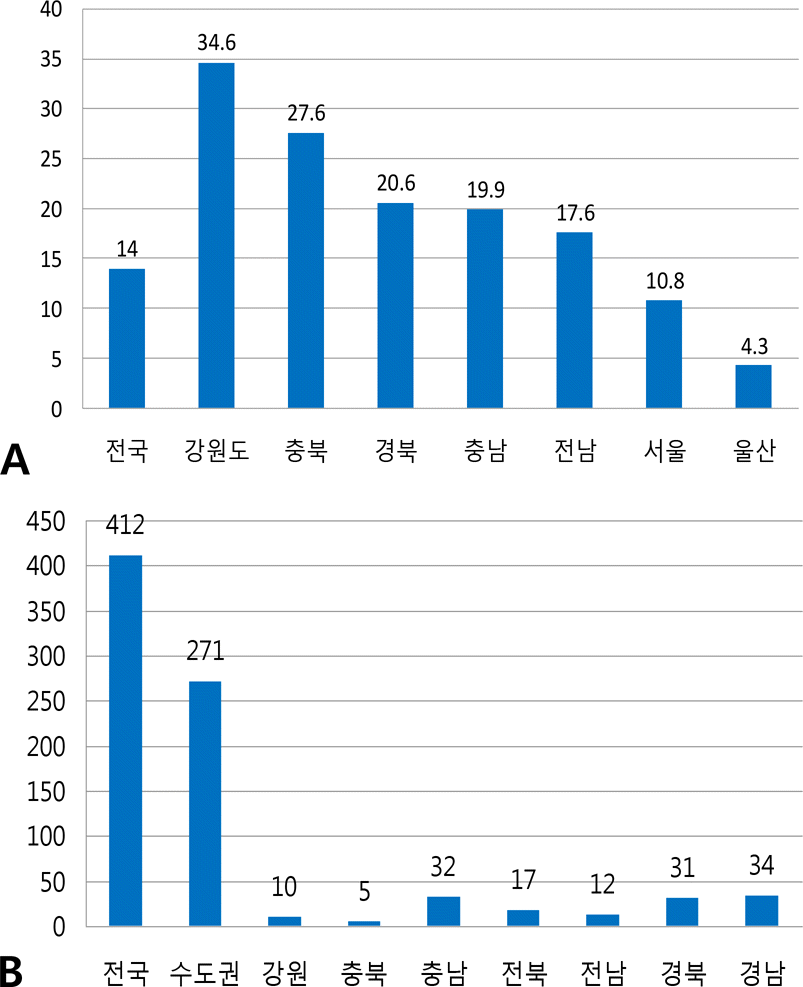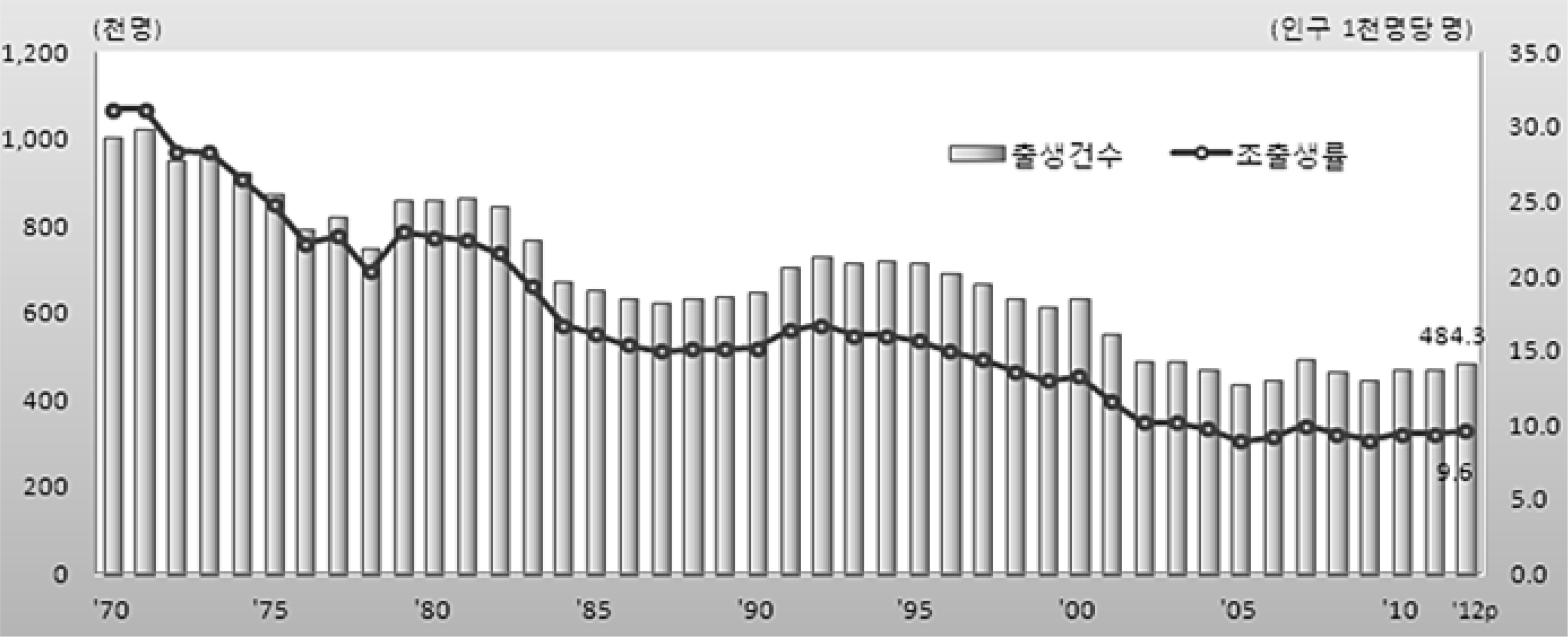Abstract
The medical environment of obstetric field has been deteriorated seriously, which is caused by sharply declined birth rates and several other causes in Korea. Inversely, the prevalence of high risk pregnancy is continuously going to explode, and human resources and facilities in delivery unit are still in shortage. It is greatly needed to be reinforced, but rather diminished substantively. Finally, maternal death rate of Korea has been extremely increased. It is time that the policies for treatment of high risk maternity in national level, no more leave the situation unchanged. The integrated care system which treats high risk maternity and neonate sequentially is very important in their disease characteristics. It is sure that the integrated management of high risk pregnancy and neonate can make an important role in the improvement of perinatal and maternal death rate and maternal-neonatal health care. Therefore, Ministry of Health and Welfare made a policy that establishes ‘Integrated Care Center for High Risk Pregnancy and Neonate’ for high risk maternity and neonate. It is supposed to start from four centers as a demonstration project in 2014, and will finally establish 17 centers in 11 broad territories of the country in 2017. It will accomplish a task of emergency center, and carry out treatment and emergency operation at all times. In addition, it will take the roll of emergency transfer system, data collection and analysis, and preventive management service through public education and relations. In the future, Integrated Care Center will play an important role in improving maternal health care as well as obstetric infrastructure.
Go to : 
REFERENCES
1.National Statistics Korea. National health medical survey. Cause of death statistics, maternal death rate. 2012.
2.OECD Family database. 2012.
3.Choi EH. Integrated care center for high risk pregnancy and neonate, direction of policy. Public hearing by Korean Society of Perinatology and Ministry of Health and Welfare. Konkuk University Hospital. 2013.
4.Kim YH. Integrated care center for high risk pregnancy and neonate, establishment. Public hearing by Korean Society of Perinatology and Ministry of Health and Welfare. Konkuk University Hospital. 2013.
5.Ministry of Health and Welfare. Answer for advisory opinion about Integrated care center for high risk pregnancy and neonate. Ministry of Health and Welfare. 2013.
6.Ministry of Health and Welfare. 2014 Support project guidance about Integrated care center for high risk pregnancy and neonate. Ministry of Health and Welfare. 2014.
7.National Statistics Korea. National health medical survey. Census statics survey, total birth rate.2008–2012.
8.Korean Society of Maternal Fetal Medicine. The survey on the actual conditions of delivery room and delivery of high-risk pregnancy, definition and classification of high pregnancy. Korean Society of Maternal Fetal Medicine and Ministry of Health and Welfare. 2012.
9.Health Insurance Review and Assessment Service. National health medical survey. Rate of high risk pregnancy. 2012.
10.National Statistics Korea. Census statics survey, Current state according maternal aging. 2012.
11.Health Insurance Review and Assessment Service. National health medical survey. Medical fee for system. 2012.
12.Oh SY. Assessment of emergency charge and night delivery fee in delivery unit. 2nd maternal and child health promotion subject. Public hearing by Ministry of Health and Welfare. 2013.
13.Moon CS. Installation of internet based high risk maternal and neonatal delivery system. 2nd maternal and child health promotion subject. Public hearing by Ministry of Health and Welfare. 2013.
14.Korean Society of Obstetrics and Gynecology. National health medical survey. Current state of the residentship and specialist of Obstetrics and Gynecology. 2013.
15.Korean Medical Association. National health medical survey. Current state of medical specialists according medical department. 2013.
16.Korean Hospital Association. National health medical survey. Current state of residentship supply and demand on medical departments. 2013.
17.Ministry of Health and Welfare. National health medical survey. Current state of medical vulnerable area. 2012.
18.Lee YJ., Kim SH., Seol HJ., Chung SH., Choi YS., Lee KS, et al. Changes in statics of maternal death in Korea (1995-2010). Korean J Perinatol. 2012. 23:179–87.
19.Sullivan SA., Hill EG., Newman RB., Menard MK. Maternal-fetal medicine specialist density is inversely associated with maternal mortality ratio. Am J Obstet Gynecol. 2005. 193:1083–8.
20.Ministry of Health and Welfare. National health medical survey. Maternal death rate by regional group. 2012.
21.Korean Society of Maternal Fetal Medicine. The survey on the actual conditions of delivery room and delivery of high-risk pregnancy, Medical current status –medical delivery system and medical vulnerable area. Korean Society of Maternal Fetal Medicine and Ministry of Health and Welfare. 2012.
Go to : 
 | Fig. 4.The change of obstetricians in Korea.14 A) The chronological change of new members of the specialist of obstetrics and gynecology. B) The chronological change of sexual difference of the specialist of obstetrics and gynecology. C) Comparison of age distribution between the specialist of obstetrics and gynecology and internal medicine (%). |
 | Fig. 6.Comparison of maternal death ratio and number of Obstetrician in tertiary hospital in 2002 Korea.1, 7, 20 A) Local difference of maternal death rate. B) Local difference of Obstetrician number in tertiary hospital. |
 | Fig. 7.Structural components of Integrated Care Center of High Risk Pregnancy and Neonate.3, 4, 6
|
Table 1.
OECD major countries birth rate in 20102
| Countries | France | Sweden | UK | Denmark | Finland | Netherlands | Korea | OECD average |
|---|---|---|---|---|---|---|---|---|
| Birth rate | 1.99 | 1.98 | 1.98 | 1.88 | 1.87 | 1.80 | 1.22 | 1.74 |
Table 2.
The number of live birth and birth rate in Korea7
| Year | 2000 | 2005 | 2010 | 2012 |
|---|---|---|---|---|
| Live births | 635,000 | 435,000 | 470,000 | 484,000 |
| Total birth rate | 1.46 | 1.07 | 1.22 | 1.30 |
Table 3.
The definition and classification of high risk pregnancy5
Table 4.
High risk pregnancy rate in Korea9
| 㟼㍌㽐䕘 (䕻) | 匠㣼⨨㽐䕘 (䕻) | 䆼㣘 (%) | |
|---|---|---|---|
| 2008 | 451,790 | 179,465 | 39.7 |
| 2009 | 431,698 | 174,243 | 40.3 |
| 2010 | 457,664 | 193,593 | 42.3 |
| 2011 | 459,239 | 196,740 | 42.8 |
Table 5.
The charge for medical insurance fee in Korea11
Table 6.
The change of obstetrics institutions in Korea11,16
A. The chronological change of obstetrics institutions opening and closing
Table 7.
The change of obstetrics residents in Korea14-16
A. The chronological secure and abandonment rate of obstetrics residents in training hospital
| B. The secure rate of obstetrics residents in training hospital in 2010 | ||||||
|---|---|---|---|---|---|---|
| Secure rate | 0 | < 25% | < 50% | < 75% | < 100% | 100 % |
| Hospital number | 25 | 24 | 29 | 12 | 7 | 10 |
| (%) | 23 | 22 | 27 | 11 | 7 | 9 |
Table 8.
A local governments lacking childbirth hospital in Korea 201217
Table 9.
Required Manpower and Essential Facility in Integrated Care Center6
A. Required manpower in Integrated Care Center
| B. Essential facility in Integrated Care Center | ||
|---|---|---|
| 㻄⻐ | 㴤㻜 | 凐㜀 |
| 㽐䕘·⼤㪼ㆨ䜴㻄⻐ | 㽐䕘 㟼㥗 㷨㷠㴜 | 1古 㢌㼿 |
| 匠㣼⨨㡼㴠 㽐䕘 䉼䘴㴜 | 2古 㢌㼿 | |
| 㽐䕘-⼤㪼㘯㛯ㆨ䜴㴜 | 6䌯㼿 㢌㼿 | |
| 㴠㼣㪼ㆨ䜴㻄⻐ | 㴠㼣㪼 㹴㼣㴜 | 1古 㢌㼿 |
| 㴠㼣㪼㘯㛯ㆨ䜴㴜 | 20䌯㼿 㢌㼿 | |




 PDF
PDF ePub
ePub Citation
Citation Print
Print






 XML Download
XML Download